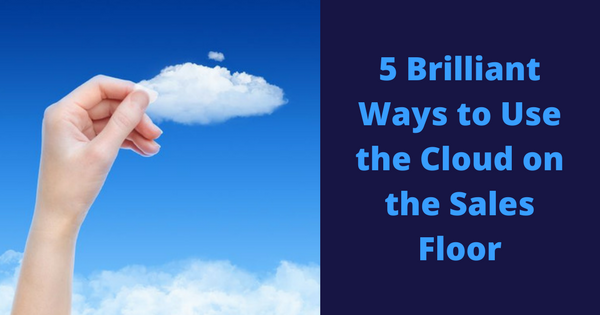When it comes to retail success, the sales floor has always played a pivotal role. This hasn’t changed, but the sales floor itself has transformed dramatically since the rise of the digital age. Using new technologies, retailers can now use software to track data, and real-time analytics to maximize sales. Here are 5 brilliant ways cloud-based systems create a more efficient sales floor.
1. View the Sales Floor From Anywhere
Using the cloud to track sales data means that anyone in the company has access to that data. Management no longer needs to wait to get stats, but can see trends as they are developing. This means they can immediately analyze traffic patterns and product conversion rates in order to make quick adjustments as needed.
Just imagine, for instance, how powerful it is for apparel retailers to know which products are going into fitting rooms – and which are converted to sales.
2. …Including From the Sales Floor
It is likely that the most powerful impact of using a cloud-based system will be on the sales floor itself.
Sales associates can find retail work difficult and repetitive, and when that happens they don’t serve the customer to the best of their ability. Access to real-time data can empower associates and help prevent disengagement. When associates are able to see what is selling well and what isn’t, they can also focus on increasing sales of underperforming items.
[Tweet “Access to real-time data can empower associates & help prevent disengagement”]
3. Associates (and Teams) Can Easily See Progress Over Time
Having instant access to sales data doesn’t just serve associates by showing them what is selling well. It presents them with the challenge to beat their sales goals, as they will be able to easily see their progress.
A cloud-based system also enables associates access to inventory data across all stores. This allows associates to place customer orders for items that are out of stock at their specific location, and still receive credit for the sale. This not only leads to better customer service, but also higher sales associate engagement and motivation.
4. Foster Healthy Competition
Installing the same software across all stores fosters a healthy competition at the store level. Nothing encourages better sales than competition with an attractive reward. A cloud-based system creates the opportunity for a real-time leaderboard to showcase top performers. Ready comparisons can be made between stores and between associates. Imagine just how powerful such a leaderboard can be…
 Even historically underperforming stores can see improvement. Suppose stores with low average units per transaction (UPT) are tasked with the goal of reaching matching the chain’s average UPT, and that this data point is available in real time to all staff in the store. UPT will increase, without associates having to be reminded to suggest a belt to match their customer’s new outfit.
Even historically underperforming stores can see improvement. Suppose stores with low average units per transaction (UPT) are tasked with the goal of reaching matching the chain’s average UPT, and that this data point is available in real time to all staff in the store. UPT will increase, without associates having to be reminded to suggest a belt to match their customer’s new outfit.
5. Mobile Point of Sale Systems
Before the digital age, bulky counters were needed to house servers, cables, computers, printers, and cash drawers. This is no longer the case. Instead of a location-based cashwrap, mobile point of sale (PoS) systems are beginning to take over.
And why not? A handheld device removes the physical barrier between customers and associates. Asssociates who aren’t stuck behind a counter can provide greater customer interaction and service. They can easily greet a customer and help that customer find what they are looking for. And since associates have the opportunity to do this before the customer heads to the cashwrap – i.e., before the sales decision has been finalized in the customer’s mind – the associate has the opportunity to influence the sale in a greater way.
Because mobile PoS systems remove the need for a sales counter, they also help expand valuable square footage.
What’s Next
The retail industry is changing and in order to remain competitive, a cloud-based system adds immense value to the sales floor. Not only can cloud-based data help with descriptive analytics about current sales, it can also guide more accurate predictive and prescriptive analytics for future sales.
Retail Analytics: How to Collect Retail Data, and What to Do With It
[xyz-ihs snippet=”TOFU2-Retail-Analytics”]
